





| Brown Argus (Aricia agestis (Denis & Schiffermüller, 1775)) |






|
|
Scientific name: Aricia agestis (Denis & Schiffermüller, 1775) Common name: Brown Argus Other names: Other scientific name Plebeius agestis French name: Collier de corail, Argus brun Order: Lepidoptera Suborder: Rhopalocera Family: Lycaenidae Subfamily: Polyommatinae Wingspan: 22-28 mm. Biotope: Heath lands, flower meadows, grassy areas, coastal areas, fallow lands. Geographic area: Southern and central Europe, missing in Ireland, Scotland and northern regions. Temperate Asia, east to Siberia. North Africa. Flight time: April to August. Number of generations : 3 in the south, 2 in the northern part of its range. Caterpillar: Yellowish green with dorsal and lateral reddish lines. Host plant: Common Rock-rose (Helianthemum nummularium), Common Stork's-bill (Erodium cicutarium). |
The upper side of the wings is brown and is lacking traces of blue. This allows to distinguish from females of other lycaenidae species. The wings are bordered by a row of orange reddish marks, which remain strong the way to the apex of the wings. There is a black mark on the upper side of the forewing. The underside is pale greyish brownish with black marks, circled with white, and a marginal band of large orange lunules. There is no mark near the base of the underside of the forewing. This enables to distinguish the Brown Argus from the Common Blue. This species overwinters as a caterpillar. |
| [To know more about the Brown Argus] [Next picture] [Top] |
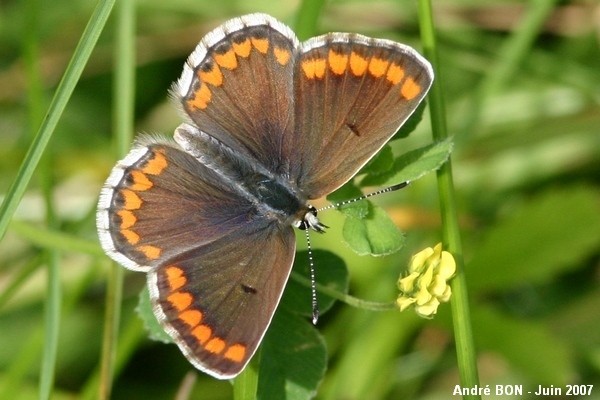
|
No trace of blue on the upper side of the wings and orange marks strongly marked up to the apex of the forewing. |
| [To know more about the Brown Argus] [Next picture] [Previous picture] [Top] |
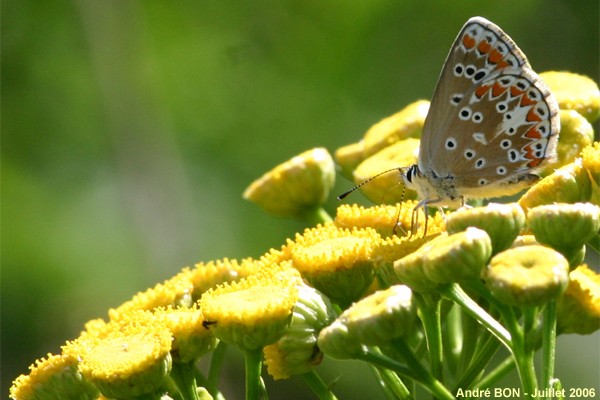
|
I have first thought to the Common Blue I am used to seeing in this area. But, the lack of traces of blue colour, the size of the orange marks which is not decreasing on the way to the apex and the lack of a basal mark on the forewing indicate this is a Brown Argus. |
| [To know more about the Brown Argus] [Next picture] [Previous picture] [Top] |
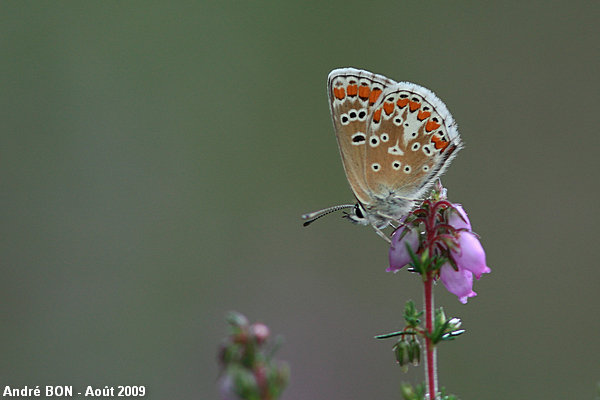
|
This Brown Argus, observed in a clearing, has enabled me to shoot a complete series of pictures with a very nice uniform background. I have noticed that all the Brown Argus on my pictures are showing brown marks in the middle of the fore wings' fringe. This is another way to tell them apart from female Common Blue which are showing a pure white fringe. |
| [To know more about the Brown Argus] [Next picture] [Previous picture] [Top] |
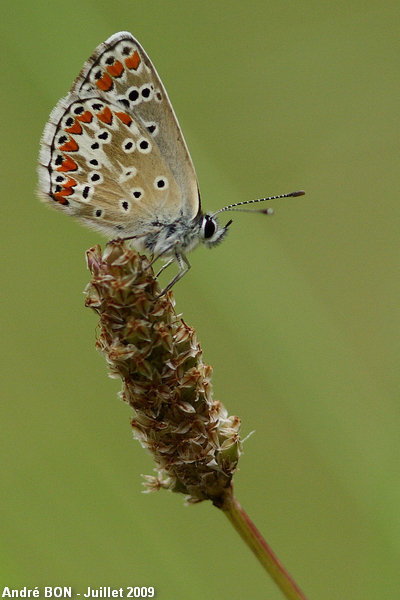
|
This Brown Argus has been very kind. I have been able to observe both sides of the wings. This helped me to make progress about the identification of lycaenidae species which is still a difficult task for me. |
| [To know more about the Brown Argus] [Next picture] [Previous picture] [Top] |
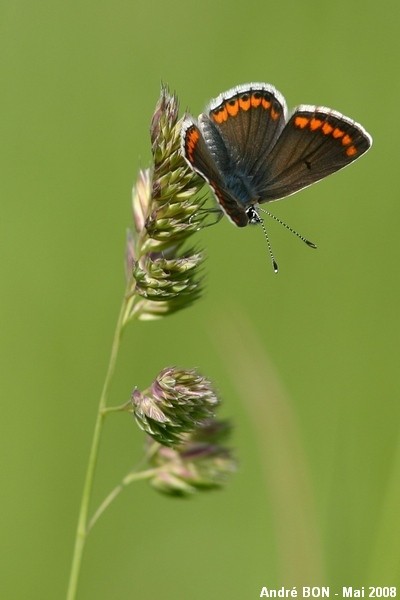
|
The wind is the main problem when shooting pictures among the high grasses. You need to wait for a lull in the wind to take the picture. |
| [To know more about the Brown Argus] [Previous picture] [Top] |
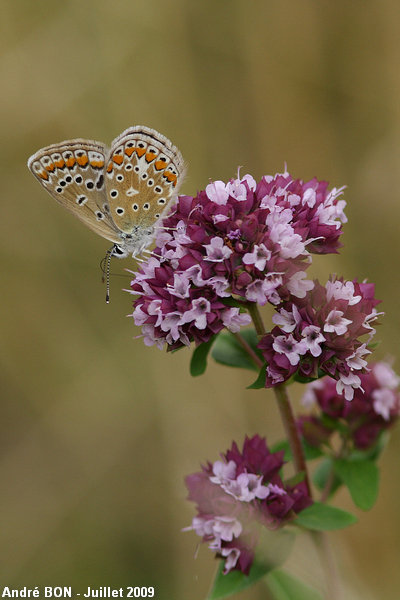
|
This flower, observed on a road side, strongly attracts butterfly by the quantity of nectar it produces. This Brown Argus was again and again flying back to land on the flower. It has been very easy to shoot pictures. I will now try to make progress in botany to identify this flower species. Well, this is Oregano (Origanum vulgare). I have planted some cuttings in my garden to attract butterflies. |